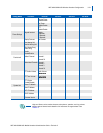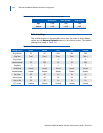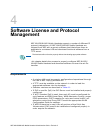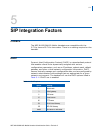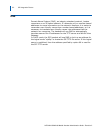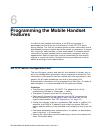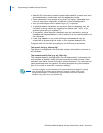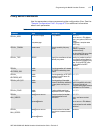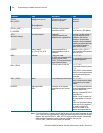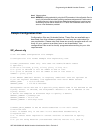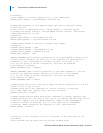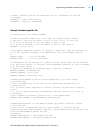
6-1
NEC MH150/MH160 Mobile Handset Administration Guide - Revision 2
6
Programming the Mobile Handset
Features
In order for the handset to function in the SIP environment, it
downloads two files from the root directory of the SIP TFTP server
during startup. The first file contains generic system information and is
downloaded by every handset during the power-up sequence. A second
file, unique for each handset, is then downloaded. It contains specific
information for each handset such as username, password, and line
appearances. Both of these files must be customized for the specific
system in use at the facility. Example files are provided but must be
edited according to local requirements.
SIP TFTP Server Configuration Files
The two file types, generic and specific, are identical in format. Any or
all of the configuration information can be contained in either file. Any
information in the specific file that conflicts with the information in the
generic file will take precedence over that in the generic file.
Authentication information will be accepted from both files. For ease of
administration, it is recommended both file types be utilized.
Guidelines
• The files are in plain text, US-ASCII. The general form of the
configuration file data is “parameter = value.”
• The generic filename must be SIP_allusers.cfg.
• Each specific filename must have the form of SIP_username.cfg
where [username] is as assigned to each individual user by the
system administrator. See
“SIP Registration” on page 3-8
• Config file contents must be in agreement PBX values or entities. For
example, the PROXYn IP address must match the actual PBX/call-
server address and any lines specified must actually be set up on the
PBX.
• Username parameters are: alphanumeric, no spaces, no punctuation,
case is ignored, 1-16 characters.
• Generic file information should contain proxy server information and
other SIP system data.



